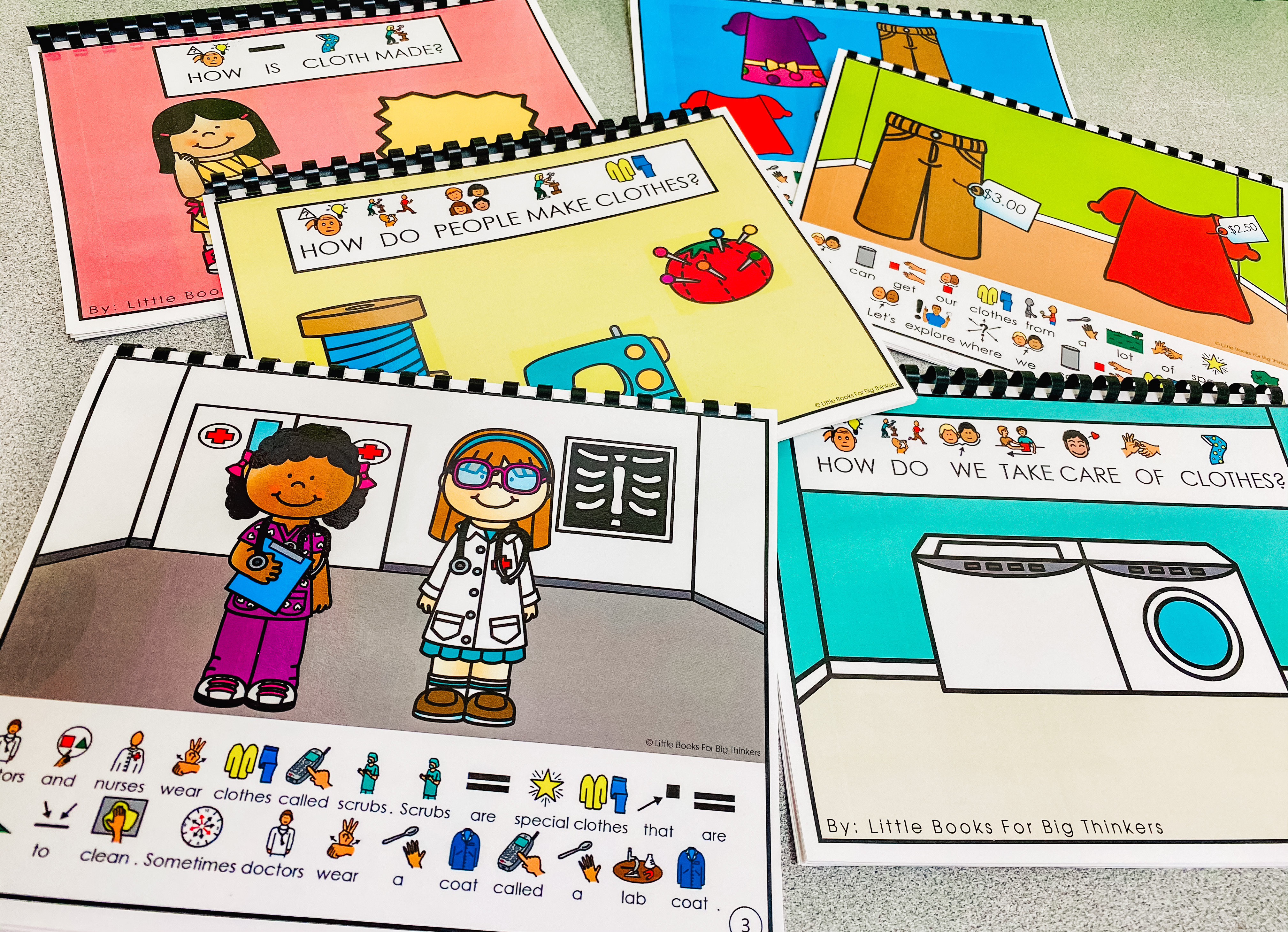Teaching Creative Curriculum can be tricky when teaching special education. I wrote a blog post at the beginning of the year on how I adapt Creative Curriculum for my special education classroom. I wanted to share more in-depth how I implement these adaptations through the use of Little Books for Big Thinkers.
So what is Little Books for Big Thinkers?

I collaborated with Rachel from Engaging Early Learners to create the Little Books for Big Thinkers book series. We took the focus question from each study and turned it into a mini-book series. The books come in standard text, symbolated text, and Boom Card format. They can be used in school, online, or at home. I have been teaching in-person since day one. Therefore, we mainly utilize the printed books. Our class is also very AAC focused so we use the symbolated text books.
How do I use them?

I mainly use Little Books for Big Thinkers during whole group story time ( which we do every Tuesday). I read the book just like any other story. While students listen we always direct them to their AAC Fringe that has the corresponding vocabulary. I will ask students to take turns following the interactive prompts embedded in the story. Even though Rachel and I have adapted the books, some of the concepts are still complex for a few of my students I make sure to always engage every student no matter what level they are on. For example, I may ask a student to come up and touch something green or another student simply just to turn the page.
After we are done reading the story we follow it up with a short youtube video that corresponds to the current study and Interactive Study Slides or Smart Notebook. This helps engage my kiddos and reinforce the new study vocabulary and content. The interactive slides and Smart Notebook incorporate skills my students are working on or working towards while keeping the theme of the Creative Curriculum Study. We always reference the Little Books for Big Thinkers book we just read while engaging in the interactive activity.
I also incorporate Little Books for Big Thinkers into my Rotation Stations. I will use each page of the book as a speech scene to work on expressive and receptive language i.e, point to something red, point to the building, what is next to the tree?, how do you think the boy feels etc. I also use them for cognitive skills as well by asking students to do things such as count the insects or identify the big and small items. Little Books for Big Thinkers can be used in so many ways other than just reading the book!

In addition, I put my Little Books for Big Thinkers series on the bookshelf for whichever study we are currently doing. Students have access to freely explore the books during center time and morning work. My student always get so excited when a new set is put out at the beginning of a new study!
